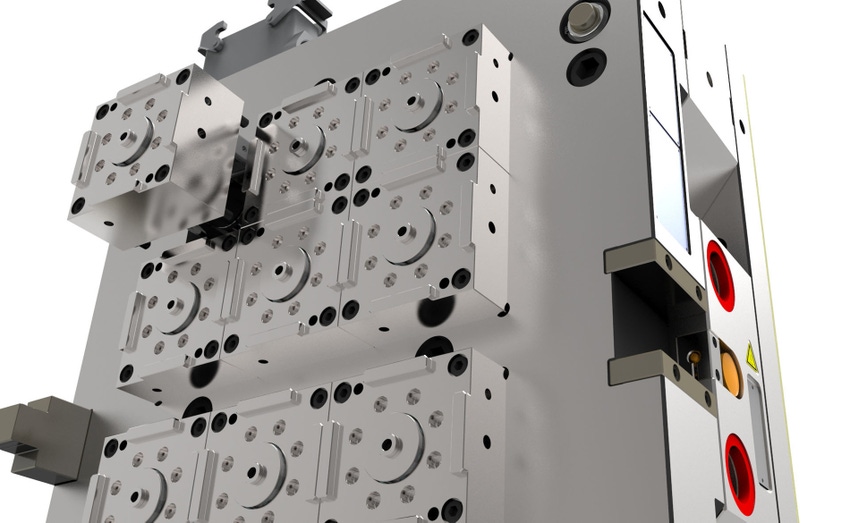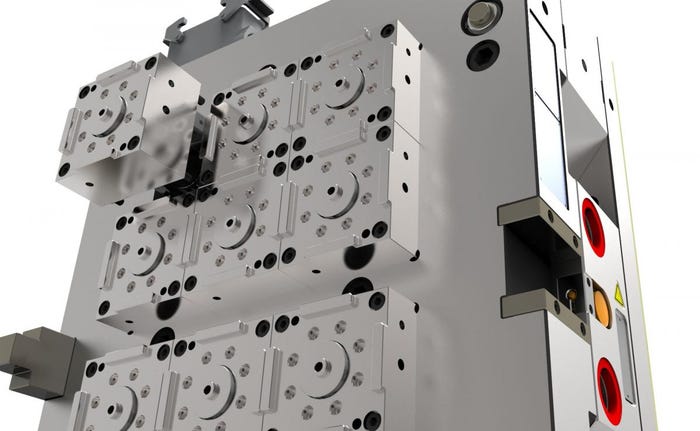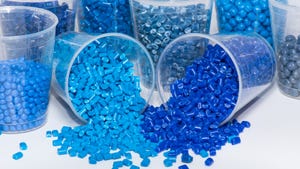Braunform GmbH helps customers improve efficiency and flexibility in their molding requirements with its latest innovation - a quick-changing system for large, multi-cavity molds.Multi-cavity injection molds with high output often need short cycle times, flexibility and ease of maintenance to give OEMs a good return on their investment. Also required is the increasing consumer demand for individual products or different product SKUs or variants across industries.
October 1, 2014

Braunform GmbH helps customers improve efficiency and flexibility in their molding requirements with its latest innovation - a quick-changing system for large, multi-cavity molds.
Multi-cavity injection molds with high output often need short cycle times, flexibility and ease of maintenance to give OEMs a good return on their investment. Also required is the increasing consumer demand for individual products or different product SKUs or variants across industries.
 These factors result in a correspondingly large number of mold variants characterized by different geometries, which necessitates different mold cores or mold pins, which have to be replaced by costly assembly work. That makes the interchangeability of mold cores and pins costly and time consuming. Now, with the patented Braunform Quick-Changing system for these multi-cavity molds, OEMs or their molders have a flexible, inexpensive alternative without long set-up times.
These factors result in a correspondingly large number of mold variants characterized by different geometries, which necessitates different mold cores or mold pins, which have to be replaced by costly assembly work. That makes the interchangeability of mold cores and pins costly and time consuming. Now, with the patented Braunform Quick-Changing system for these multi-cavity molds, OEMs or their molders have a flexible, inexpensive alternative without long set-up times.
The patented Braunform systems are distinguished by the quick-change system of individual cavities/cores or sets of cavities/cores with modular design. By simply unlocking a device that holds them in the mold, cores and pins of different geometries can be exchanged within the quick-change system. While in the modular design complete components and thus large-scale molding areas can be replaces by simple handgrips.
A solution for replacing nozzle side inserts was created in which a gate side nozzle is eliminated. The module designed can be separated from the mold during disassembly by a releasing electrical connection at the mold without additional work.
The modular design allows for more compact injection molds, because each modular unit is similar to a small mold in itself. Due to the direct centering of the inserts, ejector side to nozzle side wear is minimized. With the "floating cavities" the thermal expansion of the mold plates has little influence. Additionally, Braunform notes that because of the modular design of the core/cavity units, the modules can be used in a pilot mold for testing purposes before the final installation takes place in the production mold. This minimizes risk as well as ensures that the project is done on time.
With this system, customers realize cost efficiency due to reduced set-up times, and the costs to produce the pilot and production mold amortize within a very short time. When maintenance and/or repair is required the modules can be replaced quickly so there is very little loss of production, and production can be started again quickly. For clean-room medical or pharmaceutical applications, if repair of a module is required, the quick-change system allows for the module to be repaired or replaced in the clean room environment without transferring the mold outside the clean environment.
About the Author(s)
You May Also Like




